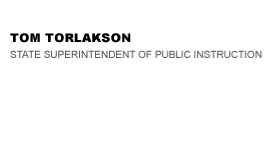Behavioral Intervention Letter, March 13, 2014


Official Letter
Official Letter
Dear Special Education Local Plan Area Directors, Special Education Administrators of County Offices of Education, Nonpublic School and Agency Administrators, and Other Entities Providing Related Services to Special Education Students:
Local Educational Agency and Individualized Education Program Team Responses to the Behavior of Students with Disabilities (Revised)
Assembly Bill 86 (AB 86), the Education Omnibus Trailer Bill, Chapter 48, Statutes of 2013, repealed regulations and added state statute that addressed requirements and restrictions concerning student behavioral intervention. The result of these changes was to modify the Behavioral Intervention Plan (BIP) mandate to align it more closely with federal law and reduce unnecessary costs, while maintaining key protections for students with disabilities related to behavioral intervention.
In accordance with Assembly Bill 110, California’s 2013–2014 budget bill, the California Department of Education (CDE) is required to provide oversight of, and technical assistance and monitoring to, local educational agencies (LEAs) regarding changes to the requirements related to the identification and provision of behavioral intervention services.
This correspondence provides clarification regarding considerations and requirements for when a LEA must take action as a response to a special education student’s behavioral needs. This document is organized into three areas:
- Individualized Educational Program (IEP) team considerations for a student whose behavior impedes learning
- IEP team considerations for a student who requires a manifestation determination
- LEA requirements and considerations following the use of an emergency intervention
IEP Considerations for a Student Whose Behavior Impedes Learning
In developing the IEP, the IEP team shall, in the case of a child whose behavior impedes the child’s learning or that of others, consider the use of positive behavioral interventions and supports and other strategies to address that behavior [34 Code of Federal Regulations (CFR) 300.324(a)(2)(i)]. The IEP must include a statement of the “special education, related services, supplementary aids and services, and program modifications or supports” that will be provided to the child [20 United States Code 1414(d)(1)(A)(i)(IV)]. There are no unique requirements regarding the documentation of any positive behavioral interventions and supports and other strategies that are identified. Per the Office of Special Education Programs, if a BIP is developed, it should be included in the IEP and aligned with the goals in the IEP (71 Federal Register 46683, August 14, 2006) [http://www.gpo.gov/fdsys/pkg/FR-2006-08-14/pdf/06-6656.pdf].
IEP Team Considerations for Students Requiring a Manifestation Determination
The LEA is required to conduct a manifestation determination for a special education student who has been suspended/removed from his current educational placement for more than 10 consecutive days or a series of removals that total more than 10 days that constitutes a pattern within a school year. [34 CFR 300.530(e)(i)(ii); 34 CFR 300.536]. (See Chart A).
If it is determined that the conduct leading to the student’s removal from his/her current educational placement was a manifestation of the child’s disability, then the LEA must either:
(i) Conduct a functional behavioral assessment, unless the LEA had conducted a functional behavioral assessment before the behavior that resulted in the change of placement occurred, and implement a BIP for the child; or
(ii) If a BIP already has been developed, review the BIP, and modify it, as necessary, to address the behavior. [34 CFR 300.530(f)(1)]
If it is determined that the student’s conduct was not a manifestation of the child’s disability, the LEA must ensure that:
(ii) Receive, as appropriate, a functional behavioral assessment, and behavioral intervention services and modifications, which are designed to address the behavior violation so that it does not recur. [34 CFR 300.530(c)(d)(ii)]
It should be noted that Individuals with Disabilities Education Act (IDEA) does not provide specific guidance regarding the conduct or form of a functional behavioral assessment (FBA), as opposed to other types of assessment. The following resources provide information on FBAs and BIPs. These resources may prove to be useful to LEAs and IEP teams that are seeking more information. The contents of these resources are not formally endorsed by the CDE and are provided here for LEAs seeking to do more research on the subject of a FBA and BIP.
Functional Behavioral Assessment Resources (Not an Exhaustive List):
- Functional Behavioral Assessments: What, Why, When, Where, and Who? Starin, Stephen, Ph.D. - http://www.wrightslaw.com/info/discipl.fab.starin.htm (accessed February 26, 2014)
- Center for Effective Collaboration and Practice - https://www.air.org/project/center-effective-collaboration-and-practice-cecp (accessed February 26, 2014)
- Functional Behavioral Assessment (provides definition of an FBA as well as assumptions included in the assessment and a model providing steps for conducting the assessment) - http://www.behavioradvisor.com/FBA.html (accessed February 26, 2014)
- Positive Environments, Network of Trainers (PENT): Functional Assessment - http://www.pent.ca.gov/beh/fa/fa.html
LEA Requirements and Considerations Following the use of an Emergency Intervention
Emergency behavioral interventions may only be used to control unpredictable, spontaneous behavior that poses clear and present danger of serious physical harm to the individual with exceptional needs (or others) that can’t be “immediately” prevented by a response less restrictive than the temporary application of a technique to contain the behavior. [California Education Code (EC) 56521.1(a)]
California law continues to require that educational agencies complete a Behavioral Emergency Report (BER) when emergency interventions are used for a student with a disability, or if serious property damage occurs. Pursuant to AB 86, this requirement, previously established in California Code of Regulations, Title 5, Section 3052(i)(5) is now located in EC Section 56521.1, subsection (e) (see below). In addition, IEP team considerations following the use of an emergency intervention, previously described in Title 5, Section 3052(i)(7) and (8), are now located in EC Section 56521.1, subsections (g) and (h) [see Chart B].
(e) To prevent emergency interventions from being used in lieu of planned, systematic behavioral interventions, the parent, guardian, and residential care provider, if appropriate, shall be notified within one schoolday if an emergency intervention is used or serious property damage occurs. A behavioral emergency report shall immediately be completed and maintained in the file of the individual with exceptional needs. The behavioral emergency report shall include all of the following:
- (1) The name and age of the individual with exceptional needs
- (2) The setting and location of the incident
- (3) The name of the staff or other persons involved
- (4) A description of the incident and the emergency intervention used, and whether the individual with exceptional needs is currently engaged in any systematic behavioral intervention plan
- (5) Details of any injuries sustained by the individual with exceptional needs, or others, including staff, as a result of the incident
(f) All behavioral emergency reports shall immediately be forwarded to, and reviewed by, a designated responsible administrator.
(g) If a behavioral emergency report is written regarding an individual with exceptional needs who does not have a behavioral intervention plan, the designated responsible administrator shall, within two days, schedule an individualized education program (IEP) team meeting to review the emergency report, to determine the necessity for a functional behavioral assessment, and to determine the necessity for an interim plan. The IEP team shall document the reasons for not conducting a functional behavioral assessment, not developing an interim plan, or both.
(h) If a behavioral emergency report is written regarding an individual with exceptional needs who has a positive behavioral intervention plan, an incident involving a previously unseen serious behavior problem, or where a previously designed intervention is ineffective, shall be referred to the IEP team to review and determine if the incident constitutes a need to modify the positive behavioral intervention plan.
If you have any questions about this subject, please contact Jeff Kramer, Education Programs Consultant, Special Education Division, by phone at 916-327-8877 or by e-mail at JKramer@cde.ca.gov.
Sincerely,
Original signed by Fred Balcom. Hard copy of the signed document is available by contacting the Special Education Division at 916-445-4602.
Fred Balcom, Director
Special Education Division
FB: rb
Enclosures
Chart A and B [http://www.cde.ca.gov/sp/se/ac/documents/chartsenclosure.pdf] (PDF)
